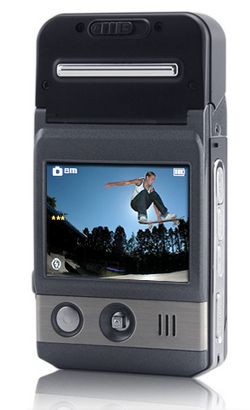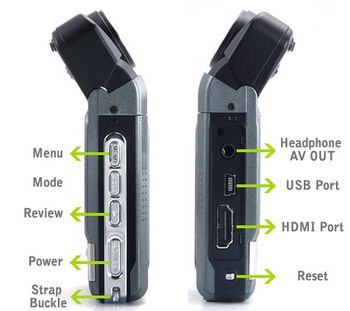One of the hottest gadgets of the year is already in short supply. But that'll change next year when a wider array of choices, fancy features and, very likely, lower prices, will emerge, analysts say.
By Alex Pham
Robbie Trencheny, an 18-year-old high school senior in Danville, Calif., promptly loaded half a dozen textbooks and novels into his Nook digital reading device as soon as he received it as a birthday present from his parents last week.
"I don't have to carry textbooks with me anymore," said Trencheny, who also bought a few books on the device for leisure reading. "Plus, e-books are cheaper than most normal books."
But Trencheny was one of the lucky ones. Barnes & Noble Inc.'s Nook reader, which can hold 1,500 digital books, was sold out weeks ago, and anyone ordering it now is not expected to receive it until February.
One of the hottest gadgets of the year is already in short supply. And despite a flurry of announcements in recent months, shoppers are finding more hype than actual products on store shelves.
While sales of Amazon.com Inc.'s Kindle readers continue to sizzle, other manufacturers are either late to the party or delaying their product launches until next year.
IREX Technologies, a European spinoff of Royal Philips Electronics, said its device, which had been slated to come out this fall, has run into "unexpected delays."
Barnes & Noble eked out its Nook this month, but only had enough to send out to customers who had pre-ordered the device online earlier this year.
Sony Corp. announced its Daily Edition wireless touch-screen reader in August, but did not start shipping the device until today. For customers who pre-ordered the $400 Daily Edition, the Japanese consumer electronics giant is rushing them out by priority mail in time for Christmas. But finding them lying around in stores this year is highly unlikely.
"What's announced, what's rumored to come, and what's available are three different things," said Ned May, an analyst with Outsell Inc.
Readers are snapping up what's available at a rapid pace. Sales of e-readers have tripled from 1 million units in 2008 to an estimated 3 million this year, according to technology consulting firm Forrester Research. Close to one-third of those sales are expected to occur between Thanksgiving and Dec. 31, the height of holiday shopping.
Amazon, which entered the market in 2007 with its Kindle reader, said the $259 device was the company's No. 1-selling item across all categories in November. The Seattle Web merchant did not disclose how many Kindles it has sold.
Driving sales is the convenience of being able to have hundreds of books in a device the size of a slim paperback. Some devices, such as the Kindle, Nook and Daily Edition, let readers buy digital titles on the device, without having to plug into a computer, via wireless connections to the Internet.
Those who walk away empty-handed this holiday, however, should not feel unlucky.
Next year will bring a wider array of choices, fancy features and, very likely, lower prices, analysts predict.
A number of companies are holding off their product launches until next month's Consumer Electronics Show in Las Vegas. One company, Plastic Logic, said it would show at CES a shatter-resistant touch-screen reader that's the size of a sheet of notebook paper.
Entourage Systems Inc. is expected to unveil a device that has two types of screens. One is a color touch-screen similar to Apple Inc.'s iPhone. The other is a gray-scale E Ink screen, the same technology used by Sony, Barnes & Noble and Amazon. The Entourage device is meant to offer the best of both screen types, including the bright color screen of an LCD and the low power consumption of an E Ink screen, which can go on for up to two weeks on a single charge.
A different type of device also may emerge next year, called mini-tablets. Essentially bigger versions of Apple iPod Touch, high-resolution, color-touch-screen tablets would allow users to browse the Web, flip through photos, read books and articles, play games or watch video.
"Today's monochrome e-readers will be challenged next year by these mini-tablets, which offer a potentially much richer media experience," said Tim Bajarin, a Silicon Valley technology analyst.
Prices are also likely to come down next year. Already, Amazon has scaled back the price of its Kindle 2 from $359, when it was first introduced in February, to $259. Sony this year began selling a basic model for just under $200.
Another reason for shoppers to wait: Book publishers, which have released hundreds of thousands of titles for sale on these devices, may start holding back some titles on the fear that digital sales could cannibalize more lucrative hardcover book sales. Amazon, Sony and Barnes & Noble, for example, price best-sellers at around $10 for each digital copy, while hardcover versions still go for around $25.
"The reason these devices sell so well is because they can get the New York Times 100 best-sellers," said James McQuivey, a Forrester Research analyst. "But what happens when publishers hold back the digital versions?"
New York publisher Simon & Schuster Inc. did just that last week when it announced that it would hold off releasing digital versions of 35 major book titles for four months after the hardcovers debut. Two other publishers, Hachette Book Group and HarperCollins Publishers, followed with similar announcements to begin delaying e-book versions of their titles starting next year.
A final reason for consumers to pause before snatching up the first e-reader they can find: Not every device gives users access to the same selection of books. The Nook is tied to the Barnes & Noble bookstore, while Kindle dials up Amazon's website. Sony's device is linked to its online bookstore and is designed to let owners easily borrow books from many public libraries, something the Kindle doesn't do.
As a result of the copy protection measures each company deploys, books bought in one bookstore may not display on another store's device. Nook owners, for example, cannot read copy-protected digital books purchased from Amazon.
"These devices are essentially little dedicated vending machines that people buy so they can purchase books from one store," said Ross Rubin, executive director of industry analysis with NPD Group Inc.
For those who want to try out digital books but don't want to fork over several hundred dollars, Rubin suggests trying e-books on a computer or a smart phone. Amazon, for example, gives away its Kindle software for the iPhone and the computer, so readers can buy and read digital books without buying a new device.
"It's a good way to dip your toe in the water," Rubin said.
alex.pham@latimes.com
Copyright © 2009, The Los Angeles Times
 Thursday, December 31, 2009 at 03:00AM
Thursday, December 31, 2009 at 03:00AM  Miguel M. de la O | Comments Off |
Miguel M. de la O | Comments Off |  Life
Life 
